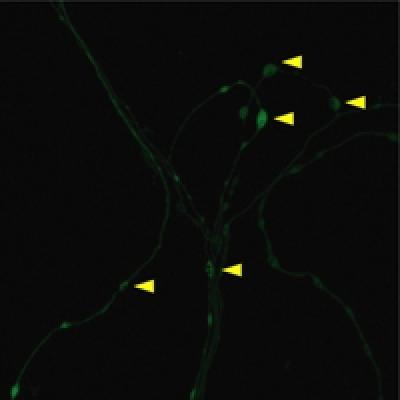The ability to learn and to establish new memories is essential to our daily existence and identity; enabling us to navigate through the world. A new study by researchers at the Montreal Neurological Institute and Hospital (The Neuro), McGill University and University of California, Los Angeles has captured an image for the first time of a mechanism, specifically protein translation, which underlies long-term memory formation. The finding provides the first visual evidence that when a new memory is formed new proteins are made locally at the synapse - the connection between nerve cells - increasing the strength of the synaptic connection and reinforcing the memory. The study published in Science, is important for understanding how memory traces are created and the ability to monitor it in real time will allow a detailed understanding of how memories are formed.
When considering what might be going on in the brain at a molecular level two essential properties of memory need to be taken into account. First, because a lot of information needs to be maintained over a long time there has to be some degree of stability. Second, to allow for learning and adaptation the system also needs to be highly flexible.

The increase in green fluorescence represents the imaging of local translation at synapsesduring long-term synaptic plasticity.
(Photo Credit: Science)
For this reason, research has focused on synapses which are the main site of exchange and storage in the brain. They form a vast but also constantly fluctuating network of connections whose ability to change and adapt, called synaptic plasticity, may be the fundamental basis of learning and memory.
"But, if this network is constantly changing, the question is how do memories stay put, how are they formed? It has been known for some time that an important step in long-term memory formation is "translation", or the production, of new proteins locally at the synapse, strengthening the synaptic connection in the reinforcement of a memory, which until now has never been imaged," says Dr. Wayne Sossin, neuroscientist at The Neuro and co-investigator in the study. "Using a translational reporter, a fluorescent protein that can be easily detected and tracked, we directly visualized the increased local translation, or protein synthesis, during memory formation. Importantly, this translation was synapse-specific and it required activation of the post-synaptic cell, showing that this step required cooperation between the pre and post-synaptic compartments, the parts of the two neurons that meet at the synapse. Thus highly regulated local translation occurs at synapses during long-term plasticity and requires trans-synaptic signals."
Long-term memory and synaptic plasticity require changes in gene expression and yet can occur in a synapse-specific manner. This study provides evidence that a mechanism that mediates this gene expression during neuronal plasticity involves regulated translation of localized mRNA at stimulated synapses. These findings are instrumental in establishing the molecular processes involved in long-term memory formation and provide insight into diseases involving memory impairment.
This study was funded by the National Institutes of Health, the WM Keck Foundation and the Canadian Institutes of Health Research.
Source: McGill University